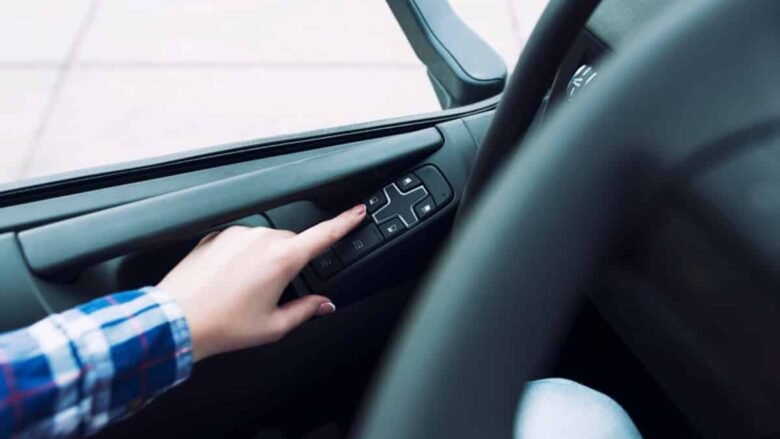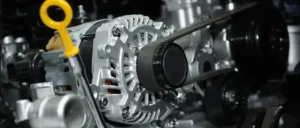A broken power window can turn a simple drive into a frustrating ordeal. Whether you’re trying to roll down the window for a breath of fresh air, secure your vehicle in a parking lot, or shield yourself from unexpected rain, a malfunctioning window disrupts your comfort and safety. While a trip to the mechanic might seem like the obvious solution, fixing it yourself can save you both time and money—often hundreds of dollars in labor costs alone. This comprehensive DIY guide takes you through every step of diagnosing and repairing your car’s power window, from gathering tools to reassembling the door. With patience and the right approach, you’ll have your window working like new again.
Tools and Materials You’ll Need
Before diving into the repair, preparation is key. Having the right tools and materials on hand ensures a smooth process and prevents mid-repair trips to the hardware store. Here’s a detailed breakdown of what you’ll need:
-
- Screwdrivers (Flathead and Phillips): These are essential for loosening and removing the various screws securing the door panel and other components. A flathead screwdriver doubles as a prying tool in tight spots, while a Phillips head tackles the most common screw type in modern vehicles.
-
- Trim Removal Tool or Plastic Pry Tool: Door panels are often held in place by plastic clips that can snap if mishandled. A dedicated trim removal tool—available at auto parts stores for under $10—lets you pop off the panel without scratching the paint or breaking delicate parts. In a pinch, a plastic putty knife can work, but avoid metal tools to prevent damage.
-
- Multimeter (for Electrical Testing): This handheld device measures voltage, resistance, and continuity, making it indispensable for pinpointing electrical faults. A basic multimeter costs around $20 and is a worthwhile investment for any car enthusiast tackling electrical repairs.
-
- Socket Wrench Set: You’ll need this to remove bolts holding the window regulator and motor in place. A set with multiple sizes (typically 8mm to 13mm) ensures you’re ready for whatever your car throws at you. A ratchet handle speeds up the process compared to a standard wrench.
-
- Replacement Window Regulator or Motor (If Necessary): These are the core mechanical and electrical components of your power window system. You won’t know if they need replacing until you diagnose the problem, so hold off on buying until Step 3. Prices vary by make and model—expect $50-$150 for a regulator and $30-$100 for a motor from an auto parts store or online retailer.
-
- Electrical Tape: Loose or frayed wires can cause future issues. High-quality electrical tape secures connections and protects against shorts, especially in the humid, cramped environment inside a car door.
-
- Work Gloves: Sharp metal edges and tight spaces inside the door can nick your hands. A sturdy pair of gloves—leather or mechanic’s gloves—keeps you safe without sacrificing dexterity.
-
- Safety Glasses: Dust, debris, or even a stray spring can fly toward your face during this job. Safety glasses are a cheap, non-negotiable way to protect your eyes.
-
- Owner’s Manual or Service Manual for Your Vehicle: Every car is different, and these manuals provide model-specific details like fuse box locations, wiring diagrams, and door panel layouts. If you don’t have a physical copy, check online forums or the manufacturer’s website—many offer free digital versions.
Gather these items in a clean workspace, like a garage or driveway, and you’ll be ready to tackle the repair with confidence.
Step 1: Diagnose the Problem
A power window can stop working for several reasons: a blown fuse, a faulty switch, a burned-out motor, or a broken regulator. Pinpointing the exact issue saves you from replacing parts unnecessarily. Here’s how to systematically diagnose the problem:
Check All Windows
Start by testing every power window from the driver’s control panel and the individual window switches. If none respond, the issue might be systemic—a blown fuse, a dead master switch, or a wiring problem affecting the whole system. If only one window fails, the problem is likely isolated to that door’s components.
Listen for Noise
Press the window switch and listen closely. A faint click or whirring sound from the motor suggests it’s getting power but can’t move the window—often a sign the regulator’s cables have snapped or the glass has detached. Silence could mean an electrical issue, like a dead motor or broken connection.
Check the Fuse
Locate your car’s fuse box—typically under the dashboard, behind a small panel, or in the engine compartment. Your owner’s manual will point you to the exact spot and identify the window fuse (often labeled “PWR WND” or similar). Remove it with a fuse puller or your fingers and hold it up to the light. A broken metal strip inside means it’s blown. Replace it with a fuse of the same amperage (e.g., 20A or 30A) and test the window. If the new fuse blows immediately, you’ve got a short circuit—likely a pinched wire or faulty motor—requiring deeper investigation.
Test the Switch
Switches wear out over time, especially in high-use driver-side panels. If your car has multiple windows with identical switches, swap the suspect one with a working one to see if the problem follows. No spare switch? Use a multimeter: set it to voltage mode, touch the probes to the switch’s output terminals, and press the button. A reading (typically 12 volts) means the switch is fine; no reading points to a dud.
Use a Multimeter
To test the motor, find its wiring connector inside the door (you’ll access this in Step 2). With the multimeter set to DC voltage, probe the connector’s pins while someone presses the window switch. A steady 12-volt reading means power’s reaching the motor. If there’s power but no action, the motor’s likely toast. No voltage? Trace the issue back to the wiring or switch.
Check for Mechanical Issues
If the motor hums but the window stays put, the regulator or track might be at fault. A regulator’s cables can fray or snap, or the window glass might have jumped its track. You’ll confirm this once the door panel’s off, but for now, note any grinding noises or resistance when you manually tug the glass (if it’s loose).
By the end of this step, you’ll have a solid idea of whether the issue is electrical (fuse, switch, motor) or mechanical (regulator, track). Write down your observations to guide the next steps.
Step 2: Remove the Door Panel
With the problem narrowed down, it’s time to access the window mechanism by removing the door panel. This step requires care to avoid damaging clips or wiring.
Disconnect the Battery
Safety first: pop the hood and disconnect the negative (-) battery terminal with a wrench (usually 10mm). This prevents shocks, short circuits, or accidental airbag triggers (common in doors with side airbags). Wrap the terminal in a rag to avoid accidental reconnection.
Locate and Remove Screws
Door panels are secured by screws hidden in sneaky spots: under the armrest, behind the door handle, or beneath trim caps. Use your manual to find them, then remove each with the appropriate screwdriver (Phillips for most). Keep screws in a labeled cup or bag—losing one means a rattling door later.
Pry Off the Panel
Starting at the bottom edge, slide your trim removal tool between the panel and door frame. Gently lever it until you hear a pop—that’s a clip releasing. Work your way around the perimeter, applying steady pressure but not forcing it. If a clip resists, double-check for hidden screws. Once loose, lift the panel upward to unhook it from the window ledge.
Disconnect Electrical Connections
Behind the panel, you’ll find wiring harnesses for the window switch, door locks, or speakers. Press the release tabs and gently unplug each connector. Tug only on the plug, not the wires, to avoid damage. If clips hold the harness to the panel, pop them free with your pry tool.
Remove the Vapor Barrier
Many cars have a plastic sheet or foam insulation glued to the door’s inner frame to keep out moisture. Peel it back carefully—tearing it means water could seep in later, rusting the door or shorting wires. If it’s stuck, warm it with a hairdryer to loosen the adhesive, then set it aside for reinstallation.
With the panel off, you’ve got a clear view of the window system. Take a moment to inspect for obvious damage before moving on.
Step 3: Inspect the Window Regulator and Motor
Now that the door’s open, you can get hands-on with the window’s guts: the regulator (the mechanical arm or cable system that moves the glass) and the motor (the electric powerhouse driving it).
Check the Regulator
Look at the regulator’s cables, pulleys, and tracks. Frayed cables, bent metal, or a snapped plastic guide mean it’s time for a replacement. Wiggle the window glass by hand—if it flops around or jams, the regulator’s not holding it properly.
Test the Motor
Reconnect the battery temporarily and plug in the motor’s wiring. Use your multimeter to confirm 12 volts at the connector while pressing the switch. If power’s present but the motor’s silent, it’s likely burned out. Give it a light tap with a wrench while activating the switch—sometimes this jolts a stuck motor to life, confirming it’s salvageable (though still unreliable long-term).
Manually Move the Window
If the regulator’s shot, the glass might slide freely or refuse to budge. Gently push or pull it along its track to assess resistance. Excessive play or grinding points to a broken regulator or misaligned track.
Check for Obstructions
Dirt, leaves, or old grease can gum up the works. Wipe down the tracks with a rag and inspect for dents or debris. A small misalignment can throw everything off, so ensure the glass sits squarely in its channel.
This inspection tells you what needs fixing—whether it’s a $5 cleaning job or a $100 part replacement.
Step 4: Replace the Window Regulator or Motor (If Needed)
If the regulator or motor is kaput, replacing it is straightforward with the right steps.
Remove the Old Regulator
Use your socket wrench to unbolt the regulator from the door frame (typically 3-5 bolts). If the window’s stuck up, tape it to the frame with painter’s tape or use suction cups to hold it. Disconnect the motor wiring, then tilt and slide the regulator out through the door’s access hole. Move slowly—catching it on the glass risks cracks.
Install the New Regulator or Motor
Position the new regulator in the door, aligning it with the bolt holes. Secure it snugly with the wrench, then plug in the motor (if separate). Attach the glass to the regulator’s clips or bolts as per your manual—tighten just enough to hold without stressing the glass.
Test Before Reassembly
Reconnect the battery and switch, then test the window. It should glide up and down smoothly. If it binds or tilts, loosen the bolts and adjust the alignment, then retest.
Step 5: Reassemble the Door
With the repair done, it’s time to button things up.
Reattach the Vapor Barrier
Smooth the barrier back into place, pressing it firmly or taping the edges to seal out moisture. A watertight fit keeps your repair lasting longer.
Reconnect Electrical Components
Plug in all connectors, ensuring they click securely. Loose connections mean future headaches, so double-check each one.
Reinstall the Door Panel
Hook the panel onto the window ledge, then press it down until the clips snap. Tighten all screws and pop trim pieces back on. Wiggle the panel—if it rattles, a clip might be broken or a screw’s missing.
Test Again
Roll the window up and down a few times. Listen for odd noises and feel for smooth operation.
Step 6: Final Checks and Cleanup
Ensure Proper Movement
Cycle the window 5-10 times to confirm it’s reliable. Hesitation or grinding means something’s still off—recheck your work.
Clean Up
Sweep away debris, stow your tools, and peel off any tape. A tidy workspace prevents tripped fuses or lost screws.
Reconnect the Battery
Hook up the negative terminal and tighten it. Start the car to ensure no warning lights pop up.
Test Other Functions
Check locks, speakers, and other windows to confirm nothing got disrupted.
Lubricate (Optional)
A spritz of silicone spray along the tracks keeps things sliding smoothly and wards off rust.
Conclusion
Fixing a broken power window might seem daunting, but with this guide, it’s a manageable DIY win. By diagnosing the issue, carefully accessing the mechanism, and swapping out faulty parts, you’ve saved a hefty repair bill while gaining hands-on know-how. If the fix doesn’t stick or the job feels overwhelming, a mechanic’s still an option—but chances are, you’ve got this. A working window restores your car’s comfort, security, and resale value, all from a few hours in the garage.




